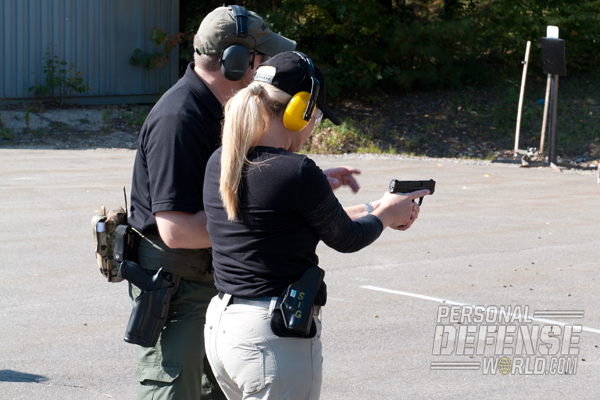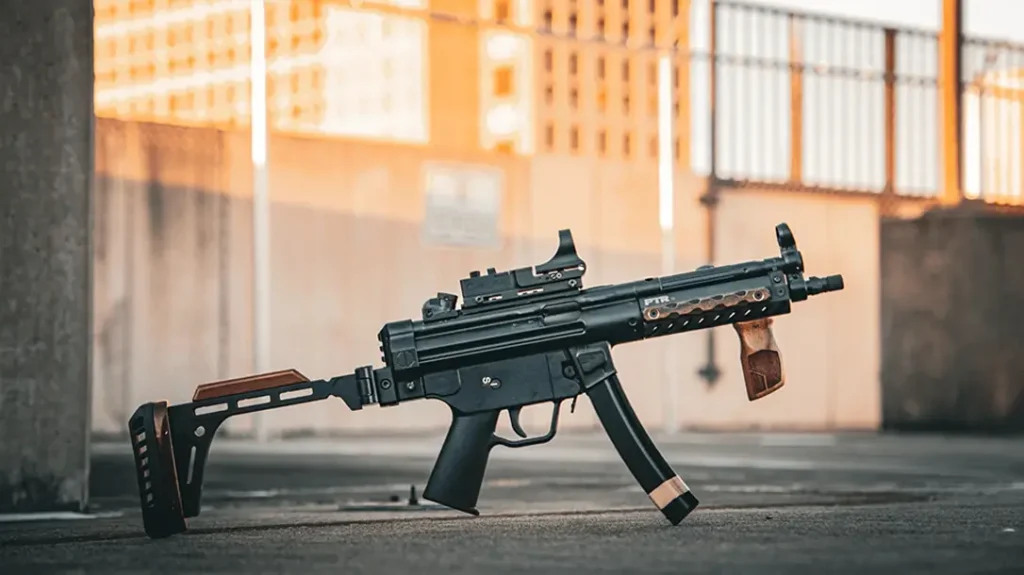During a recent trip to the Sig Sauer Academy the opportunity to watch a training session in-progress arose. The teaching style and methodology were intriguing. The Sig Sauer Academy has been around for decades and has a solid reputation nationwide for professionalism. After seeing the class in action and meeting with academy director Adam Painchaud, I decided a return trip was in order. Plans were made to attend three different classes, one of which was Intermediate Handgun Skills.
Sig Sauer Academy classes are structured to handle a broad range of shooters. Classes start with basic to intermediate classes taking the newest shooter to a point where they can comfortably operate and maintain their weapon. Once the basics are handled, you move into the defensive classes where application in the real world is the focus. Most classes are structured as single-day training for those with busy schedules. Starting with Orientation (101), then Basic (102), the last pistol sequence prior to defensive shooting is Intermediate Handgun Skills (103). This class is designed to polish up your basic skills in preparation for Defensive Handgun Skills. It provided a solid indication of their pistol training and a decent pistol test.
The pistol I used in this class was a full-sized Springfield Armory Loaded chambered in 9mm with a few simple alterations. Checkering was added by the Springfield Armory Custom Shop. The adjustable rear sight was replaced with Harrison Design fixed sights. A Smith & Alexander magazine well was installed as well as a 10-8 Performance brass bead front sight and tactical grips. Sprinco USA provided a custom guide rod and spring setup to handle light practice loads. Set up as a range and practice pistol to mimic my working 1911s, it was going to see frangible and lightweight ammunition. A simple spring change keeps the pistol easy to shoot with even the hottest 9mm load. Holstering was handled with JM Custom Kydex.
Advertisement — Continue Reading Below
Handgun 103

Most classes begin at 0830, and the Pro Shop opens at 0800, giving you plenty of time to get oriented and pick up equipment for the class. The Pro Shop staff are incredibly friendly and professional. It is the best equipped Pro Shop I have seen at a training academy.
Advertisement — Continue Reading Below
Class begins in a classroom on the upper deck of the facility. This area includes classrooms, the indoor range, a shoot house, steel targets and some other ranges. There is also a live-fire shooting simulator providing training in decision-making.
Classroom instruction consisted of introductions, basic skills and safety review, as well as some discussion on the use of force. Most students were relatively local, with me as the lone officer. Our instructor, Dylan Kenneson, is a full-time Sig Sauer Academy trainer and a part-time local officer. He talked about the law, the use of deadly force and application of pistol skills in defensive situations. Dylan focused on deadly force as a last resort, with de-escalation the primary focus. He also made clear the serious consequences of its use. After only an hour or so in the classroom, it was clear that the bulk of this day was going to be spent on the range.
While some students had been at the Sig Sauer Academy for two previous days, many had not, so time was spent dialing in the basics and checking pistols for accuracy. Targets designed to simulate real threats were used. Few threats come equipped with aiming circles, so these targets provide a realistic sight picture. Circles designating proper hit areas were faint, with one at the top of the target for sighting in. These drills support the class’ focus on preparation for defensive pistol training.
Advertisement — Continue Reading Below

Reloads and malfunction drills were next. Sig Sauer stresses keeping your gun in your “workspace,” allowing you to keep the threat in sight. This is pretty universal instruction these days, and it makes for proper manipulation of the pistol while keeping the threat in sight. With everyone keeping their gun loaded and working, it was time to move and communicate. It is a 360-degree world, and drills for drawing and shooting in all directions were covered along with checking the area prior to reholstering. We also drew and moved off the line of fire. This disrupts the attackers OODA (observe, orient, decide, act) loop and moves you off the direct line of fire. It’s always better to be a moving target whenever possible.
Dylan also stressed the need for verbal communication with the threat as well as everyone around you. Simple verbalizations were provided, but the intention of the drill was to force you to state in simple and clear language your condition and the condition of the threat you just shot. This proved a bit uncomfortable for most students, but it is incredibly important in the real world. Putting this all together during the last drills meant students were shooting, moving and communicating while keeping their pistol loaded and running.
Advertisement — Continue Reading Below
The end of the day was spent in the simulator. It is a computer-controlled projector that runs “real life” scenarios on a screen you can shoot. As the scene runs, you decide whether to shoot (or not) and where to shoot. Lasers track your rounds, providing your hits (and misses) and how quickly you were on target. While familiar to me, for most civilians this is a real eye opener. After his run, one student purposely sought me out to express his new appreciation for the decisions an officer makes every day. This is a fantastic training tool, and short of force-on-force training, it provides a real example of the decision-making required when using deadly force in the real world. It is a great bridge to force-on-force training and more advanced firearms training.
Final Notes

Advertisement — Continue Reading Below
There are a couple of immediate turnoffs for me when attending training. The first, and most critical, is instructors denigrating other trainers or academies. It is petty, unprofessional and counterproductive. Sig Sauer Academy instructors are among the most professional I’ve encountered when it comes to this. They stand on what they teach without the need to criticize other methods. In fact, they will make what you do better whether it is “school doctrine” or not. Secondarily, there was no “competition is evil” mindset. Every shooting discipline has its value and the idea that participating in a local match will somehow denigrate your self-defense skills is pure mythology generally propagated by those too frightened to give it a try.
Another nice overall aspect of the school was the calm and professional demeanor of all the instructors. No screaming, yelling, or badgering students. Where extra attention was needed an instructor calmly provided help. Most students seeking training either already survived boot camp once or have no need to pay to get treated like a “troop.” The training staff was friendly, professional, knowledgeable and dedicated to providing each student exactly what they need. The pace of the class was excellent and geared toward any shooter.
The Sig Sauer Academy is an excellent place to train, no matter your level of skill or equipment. While Sig Sauer pistols are often seen, they are not required—you can bring any workable and dependable firearm. With state-of-the-art facilities, the best pro shop in the business and incredibly professional trainers, it is hard to go wrong. If you are looking for a fantastic training experience, look up the Sig Sauer Academy. You will not be disappointed.
Advertisement — Continue Reading Below
To find out more visit https://www.sigsaueracademy.com or call 603-610-3400.






































